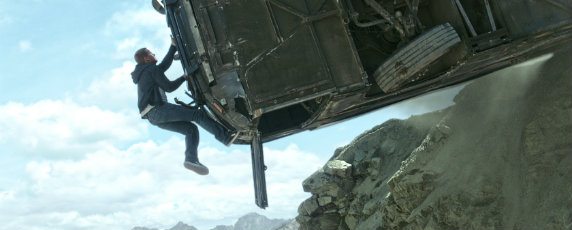The human element: the issue of using CGI actors
While not unusual, in recent years the question of how to proceed with filming in the wake of actors’ deaths has taken a new turn. With the rise of technology, specifically computer-generated imagery (CGI), opportunities have opened up for film-makers to utilise actors’ digital images and create realistic footage of them, even after they have passed away. Such technology was used in Gladiator to recreate Oliver Wood, who played Proximus. It was so successful that, allegedly, no one could tell the difference.
The case was opened up again recently, with the deaths of great actors Philip Seymour Hoffman, set to star in The Hunger Games: Mockingjay, and Paul Walker, who starred in the Fast and Furious franchise. While Francis Lawrence, director of Mockingjay, insisted that CGI would not do Hoffman justice, Justin Lin took the opposite approach with Furious 7, using CGI to recreate Paul Walker on screen for the last time. Although the choice was intended to honour his memory, it was greeted with mixed responses from fans. With such polarised responses to a similar tragedy, the question remains: has CGI gone too far? Is the use of CGI really an act of respect, or simply born out of necessity?
With such polarised responses to a similar tragedy, the question remains: has CGI gone too far? Is the use of CGI really an act of respect, or simply born out of necessity?
Overwhelmingly, the argument against using CGI to recreate Hoffman is his uniqueness. Acting is an art, after all, and everyone has their own way of approaching a character. Simply superimposing a face on a body does not enable anyone to embody the character in the same way. In this way, Lawrence’s decision not to use CGI is steeped in a deep respect for the actors’ ability to embody Plutarch Heavensbee in a way which would be impossible to replicate. Paradoxically, Lin’s choice of introducing a CGI version of Paul Walker, and his character Brian O’Conner, is born from the same respect for the deceased actor. Or, so it seems. There are two main differences between the characters in question; despite Plutarch Heavensbee’s importance to the plot, the film does not hinge on the character, whereas the absence of Brian O’Conner could very well make or break Furious 7. The proof of that lies in the box office performance of the one film which did not star Paul Walker: The Fast and the Furious: Tokyo Drift, earning the least out of the six. As well as this, as one of the main characters, O’Conner’s presence is, as with his other five films, integral to the plot. So, naturally, the choice to retain his character through the use of CGI must have been somewhat due to necessity.
Even so, neither film would have omitted the respective characters completely. There were few Mockingjay scenes which still required Hoffman, whereas Furious 7 was only halfway through filming when Paul Walker passed away, which may also have informed the decision. With so much of the film recorded already, the idea that they should omit him completely would be unlikely, particularly in light of his integral role. Yet it could well have been impossible to hand off his scenes to other characters, with so much left to film.Moreover, the choice to recreate Paul Walker in order to portray Brian O’Conner was not one taken lightly. It is clear from producer Neal Moritz’ statement in 2013 that the decision relied on consent from Walker’s family as much as anything. Especially because two of his brothers performed as stand-ins for him when filming resumed after his passing. If the recreation of Walker was merely a result of necessity, would they have agreed to take part?
While Lawrence asserted that the use of “digital trickery” would have tarnished Philip Seymour Hoffman’s memory, the opposite is clearly true of Paul Walker. Through the contribution of Walker’s brothers and countless others, Justin Lin was able to send Walker off with more than a half-finished film and immortalise his memory for his friends and family. If that’s what CGI can achieve, it doesn’t seem so bad. Whether or not fans agree with the decisions made by directors, it is clear that both took place for the same reason: to honour the deceased actors. Time will only tell how successful either effort was.
Images: Universal Pictures; Lionsgate



Comments